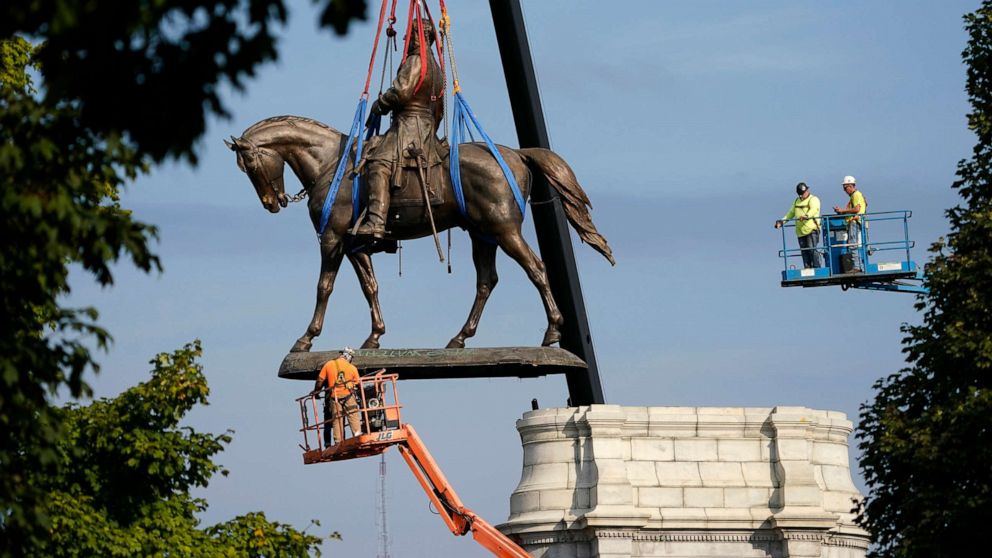The American Tradition of Tearing Down Statues

by Matthew Kauffman ‘23
The statue of Confederate General Robert E. Lee in Richmond, Virginia, was removed via crane on September 8 after a drawn-out controversy muddled by protests and lawsuits. Stonewall Jackson was also torn down, and Jefferson Davis was vandalized with graffiti and toppled. Former Vice President John C. Calhoun, who owned about 80 slaves, was removed from its place in Charleston, South Carolina. “Johnny Reb” was lifted from its pedestal and whisked away in Norfolk, Virginia.
Since the killing of George Floyd and ensuing racial justice protests, nearly 100 statues honoring Confederate figures have been taken down in the United States. But the decisive removal of statues is not a phenomenon that is new to this country. Whether it be Lee in Richmond, or King George III in New York after the signing of the Declaration of Independence, Americans are impassioned with tearing down these symbols of a tumultuous past.
The root of the problem lies in the visible symbolism of these monuments, which were constructed in order to reflect the values of the country or state at that time. Lee’s statue, which was put up in 1890, and other monuments like it, were meant to be venerated by white southerners in the post-Civil War era, but in the modern age, it is clear that they represent only the vain attempt to maintain white supremacy in the South.
Statues become problematic as societal values change, argues Colin Woodard of the Washington Post. “The problem is that societies frequently reconsider these essential stories as they undergo invasions, liberations, revolutions, and quieter forms of evolution,” he writes.
In this case, as values evolved, more and more inherent meanings were noticed about the Confederate memorials. As America reconsidered how it looks at race historically, these statues seemed less like an ode to American history, an argument made by those opposed to their removal, and more like a remembrance of the hatred that plagued the country and recently resurfaced in the form of police violence against African Americans.
Statues like these are meant to tell stories, but over time, stories’ meanings can change drastically. “Years, decades or centuries later those stories had been discredited, the values they asserted now offensive to great swaths of the societies over which the statues loomed,” said Woodard.
If any nuance existed at the time they were erected, it quickly dissipated in Richmond. The prominent Confederate roots of the city led to quick and violent protests that left every statue on Monument Avenue defaced and eventually taken down save that of African American tennis legend Arthur Ashe. The citizens of Richmond were determined to remove themselves from the city’s legacy as the capital of the Confederacy.
The often violent removal of statues throughout American history, whether it be a Confederate memorial or an image of a cruel British monarch, is not an arbitrary action; rather, it is a simple yet powerful way for the citizens to tell the world that their values have changed and new ones are being formed. In a country that has been evolving ever since its birth, the citizens make sure that their statues reflect what they truly believe.